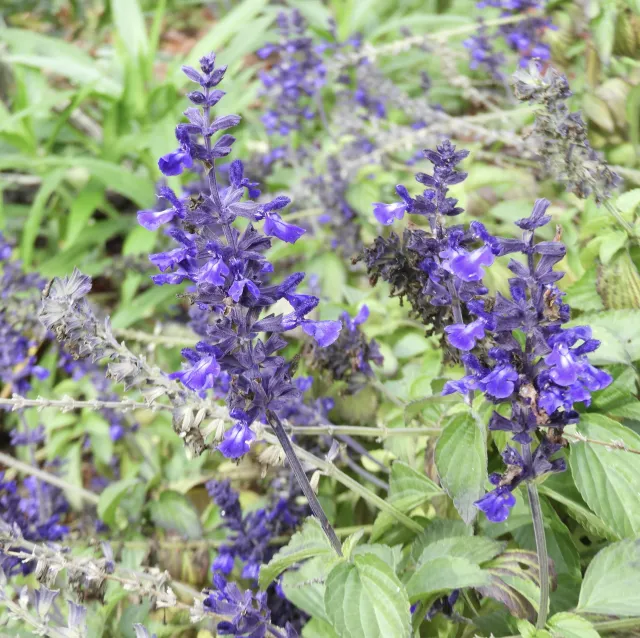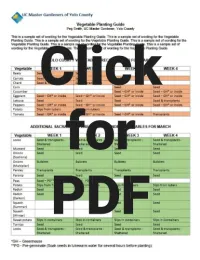
Article by Peg Smith -
The average monthly rainfall in October for Davis is 1.8 inches. My rain gauge measured a nice ‘dose’ of rain from the recent storm, 1.5 inches, that washed away the summer’s dust from the garden. Plants look brighter and refreshed. Depending on where you live, Yolo County water supply comes from wells pulling from the aquifer and/or pumping stations on the Sacramento River. One of the pumping stations is easy to see on the riverbank on the northwest side of the bridge over the Sacramento River near the airport. Woodland and Davis use a mixture of well and Sacramento River water. Winters, Esparto and Knights Landing are supplied by wells, West Sacramento is supplied by Sacramento River water. This year our Northern California dam levels are in fine shape. We still need to be ‘water waste alert’ as this winter’s rainfall is still an unknown and it may be that our dam water storage may need to take us through the spring, summer, and fall of 2026.
This is the prime time to be planting, the soil is softened, but not too difficult to work after the rain. Nurseries are carrying a supply of perennials and winter annuals. Fellow gardeners will be dividing their crowded perennials. I must admit that I do not hesitate to ask a neighbor or friend for a division if they have a particular plant I would like to try.
I love the stories behind some plants, Salvia ‘Anthony Parker’ is a particular favorite of mine. This hybrid from South Carolina garden designer, Frances Parker, is a cross between Salvia leucantha 'Midnight' x Salvia elegans (Pineapple sage). Frances rescued the young seedling from her lawn just ahead of the mower and named it for her young grandson, Anthony, who was one year old at the time (1994). It produces foot-long spikes of dark purple bloom all through the winter and does not need pruning back until March. It is one of those plants that has ‘gone out of fashion’, so it can be hard to find locally; however, it can be found online at a few sources. An easy-to-grow and trouble-free addition to the garden, it provides wonderful winter color and support for birds, butterflies, and bees from fall to early spring.
Water
Now is a good time to adjust your automatic watering systems to a winter schedule with less frequent watering, or switch to manual operation as temperatures cool and (hopefully) winter storms deliver. Dormant plants still need damp soil; if we enter an extended dry period, they may need a deep soak.
Winter Preparations
Clean unused pots with a solution of bleach, one part bleach to nine parts of water. Turn pots and trays upside down so that water does not accumulate.
Winter is a good time to assess tools; do they need replacing, sharpening, cleaning, or adjusting? One consideration as we gardeners age is when to invest in ergonomically friendly garden tools so that we can continue the pleasure of gardening while preserving physical strength. Adjusting to an hour or two in the garden, breaking tasks into smaller parts with built-in rests, will help maintain all the wonderful work invested in a garden without it becoming overwhelming.
Check the placement of garden pots: are they sheltered, not receiving rainfall; are they exposed and unable to drain well in a drenching rain; do they need to be moved for frost protection?

Ornamentals and Annuals
There are many delightful winter annuals in varying colors that can be seeded, some we often see in nurseries, others it is worth finding seed to grow and add to the palette of spring color.
Common winter annuals – pansies, violas, snapdragons, calendula, stock flower, and cyclamen.
Easy to seed annuals – love-in-a-mist, larkspur, foxgloves, alyssum, and borage. Nasturtiums can be seeded and do well in containers; trailing varieties are available for hanging baskets. Sweet peas will provide a show if given a trellis to climb; there are many colors and scents. Many of these annuals will reseed for the coming years.
Hollyhocks are biennial, producing root and foliage in their first year, with flowers on tall spikes in the second year and are worth the wait.
California annuals – California poppies can be seeded in a bare patch of the garden. Sprinkle the seed and rake very lightly, keep moist through dry periods. Tidy tips, baby-blue-eyes, tarweed (Madia elegans), and clarkia can be seeded into pots, then transplanted.
Many perennials, native and non-native, are available at this time of year. Planted now, they will spend the winter developing healthy root systems before the heat of next summer.
The UC Master Gardener-Yolo website’s Free Publications page has useful lists of shade plants, water-efficient plants, Yolo County Natives, and others that will thrive in our region.
Diseases, Pests, and Beneficials
Keep an eye out and remove any diseased plants. Before you place them in your compost, check with UC IPM to identify the disease. Home compost temperatures will not be hot enough to kill some disease fungal spores or bacterium.
Bulbs
November and December are prime bulb planting months for those bulbs with which we are familiar, such as daffodils and narcissus. Different types of bulbs, corms and rhizomes can be planted year-round and as they emerge and bloom, they will add to the seasonal beauty of your garden.
Selections of bulbs can be found locally or ordered online and shipped at the appropriate time for planting in our area. The UC ANR Sacramento Bulb Planting Schedule is a helpful guide.
Fruits
Schedule time to dormant oil spray (Neem oil) your fruit trees. Many bacterial, fungal diseases and pests will be controlled by a program of dormant spraying, usually two to three times over the winter months, once the trees are bare. Watch the weather and spray when the following twenty-four to forty-eight hours are rain-free. Wait for leaf fall before pruning fruit trees. Dormant fruit tree pruning encourages growth in the spring from buds just below pruning cuts. See the UC ANR Fruit Trees: Training and Pruning Deciduous Trees for more information.
Trees
If you are considering adding trees to the landscape, there are resources that can help guide your choices towards a ‘right tree, right place’ decision. Characteristics of a tree and where it is positioned in the landscape can make the difference between enjoying its addition to the garden or eventually finding it a nuisance. Another important aspect of the choice is whether it is ‘climate-ready’ for our region.
- The City of Davis and the UC Davis Arboretum & Public Garden worked with CAL FIRE, Tree Davis, UC Agriculture and National Resources, USDA Forest Service, Redwood Barn Nursery, as well as several local tree experts to provide a list of Climate Ready Trees for our area.
- The City of Woodland offers a Residential Street Tree Rebate along with an Approved Master Street Tree List.
- The City of Winters also provides a Master Tree List.
By referring to these recommended tree lists, the selection of a tree of the height, canopy width, and characteristics to suit both the site and the aesthetic of the garden should give years of pleasure.
Soil Improvement
‘Green manure’ can still be seeded in any garden's bare spots. Vetch and red clover, with their attractive flowers, can be planted separately or mixed. They will replenish nitrogen in the soil through the winter and help prevent erosion. See UC ANR’s Winter Cover Crops for the Home Garden for more information.
Lawns
Lawn removal projects can still be undertaken in November. See Master Gardeners of Yolo County’s How to Remove a Lawn.

November Vegetable Planting Guide
Click the thumbnail image on the right to open a PDF of Peg's November Vegetable Planting Guide. This guide will tell you which Yolo County and Sacramento area vegetables are recommended for planting during November, along with how and when to plant them.
